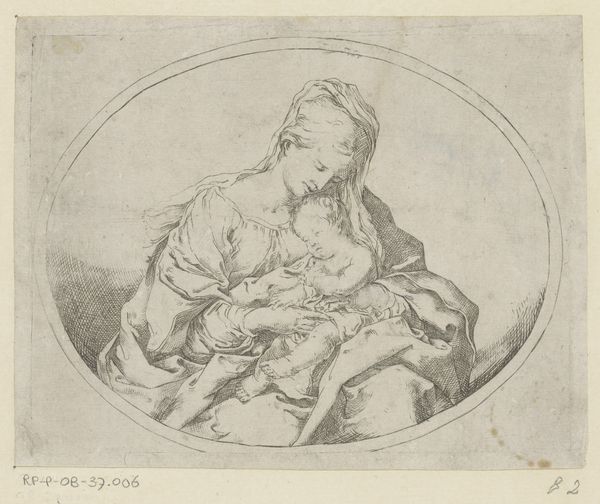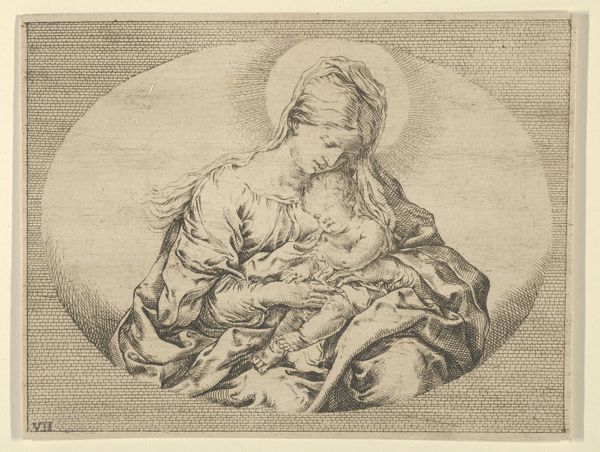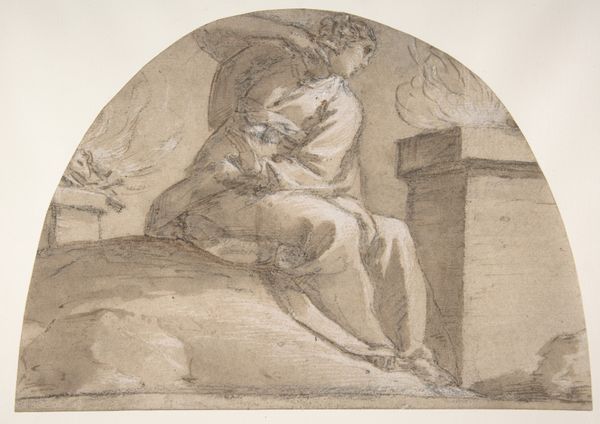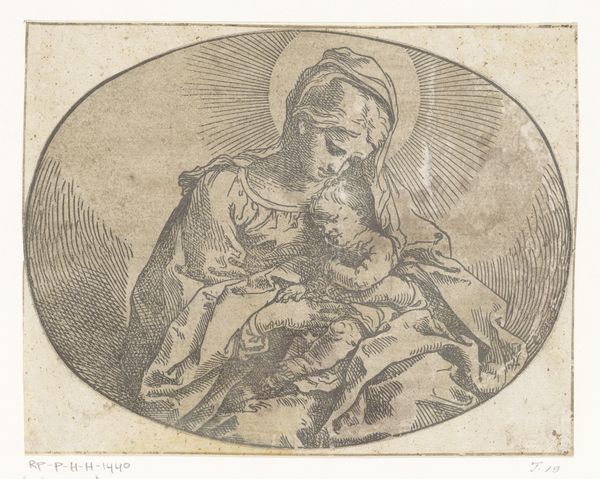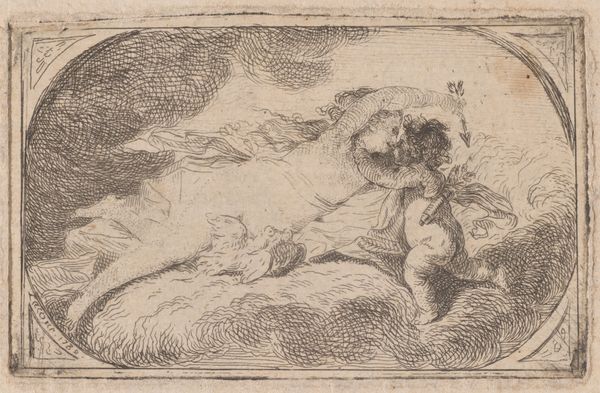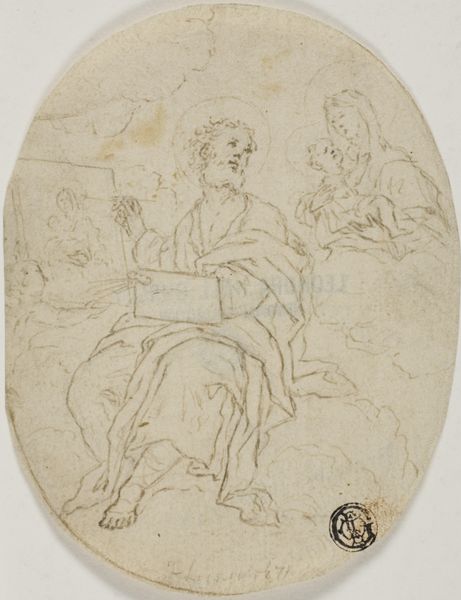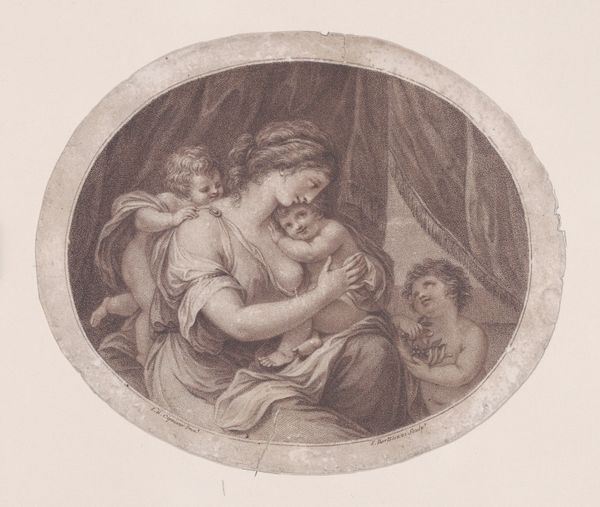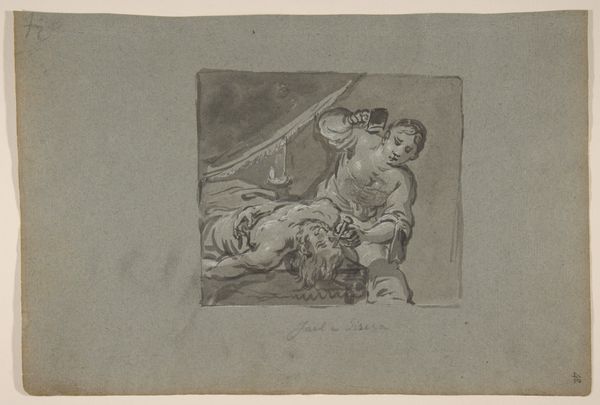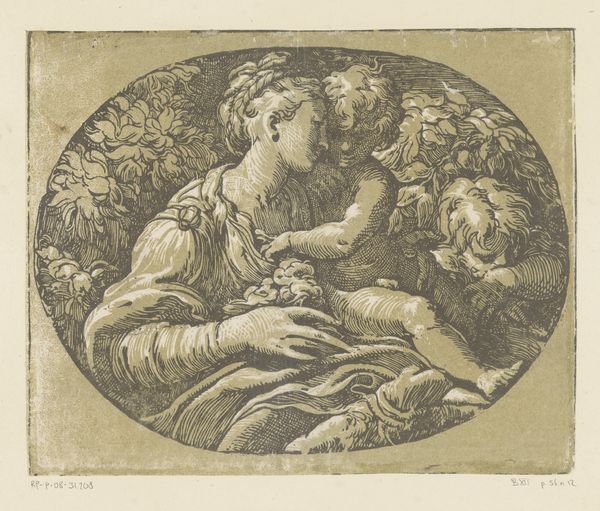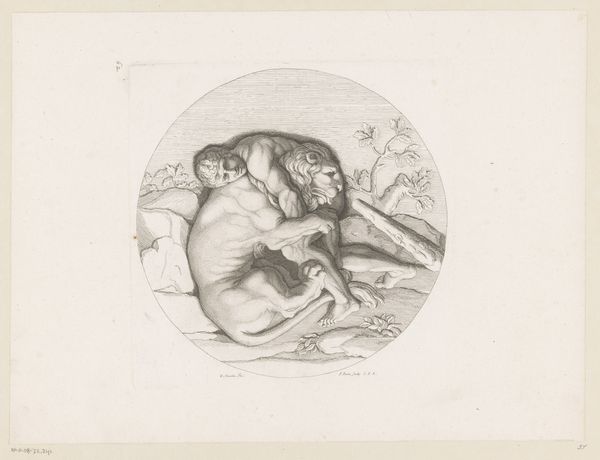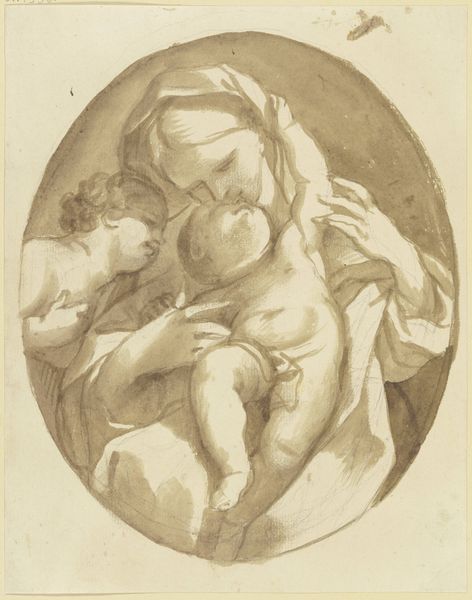
The Virgin holding the infant Christ, an oval composition 1595 - 1645
0:00
0:00
drawing, print, intaglio, engraving
#
drawing
#
narrative-art
# print
#
intaglio
#
figuration
#
line
#
history-painting
#
italian-renaissance
#
engraving
#
realism
Dimensions: Sheet (Trimmed): 4 11/16 × 6 5/16 in. (11.9 × 16 cm)
Copyright: Public Domain
Curator: Looking at Guido Reni's "The Virgin Holding the Infant Christ, an Oval Composition," an engraving dated somewhere between 1595 and 1645 and currently housed at the Metropolitan Museum of Art, what strikes you first? Editor: The vulnerability. It’s a very delicate etching, conveying a powerful tenderness. Almost feels whispered. The linear qualities contribute a lot to this intimacy. Curator: Indeed. Reni, a key figure of the Italian Renaissance, was deeply engaged with the prevailing printmaking technologies of his time. Consider the economic factors that drove the spread of engravings; it was very different compared to traditional painting for an elite class. Editor: So, this engraving allowed a wider distribution of this image. Making art accessible; that's interesting in itself. But look at Mary’s gaze. The tilt of her head. It's pure, unfiltered love. It gives you the sense that for all of Renaissance ideals of beauty, this speaks directly of a primal bond. Curator: And this bond is mediated by the material conditions. The lines create value and define forms, transforming devotion into a repeatable object for private and public consumption. How does the medium shape our understanding of the subject, versus if we saw this as a monumental altarpiece? Editor: Good question. In an altarpiece, we might feel reverence on a grand scale, but here? It shrinks it down. It’s a quiet, accessible moment. A connection facilitated not only by theme, but the work’s material being itself. Curator: Exactly. The labor behind producing the print, the etching of lines into metal, becomes part of its meaning, part of a larger social context. Every copy extends this. Editor: Well, now that I consider the material reproduction process, I feel there's a shared intimacy too. Between the artist, plate and printed image – so that vulnerability perhaps now involves the image's life in multiples. So, while not perfect, there is more opportunity to be discovered by more people than perhaps any large scale painting could facilitate? Curator: It definitely makes you reflect on this moment as captured. The economics that fuel the art inform, ultimately, the image we are considering. Editor: Absolutely. What a great moment.
Comments
No comments
Be the first to comment and join the conversation on the ultimate creative platform.
